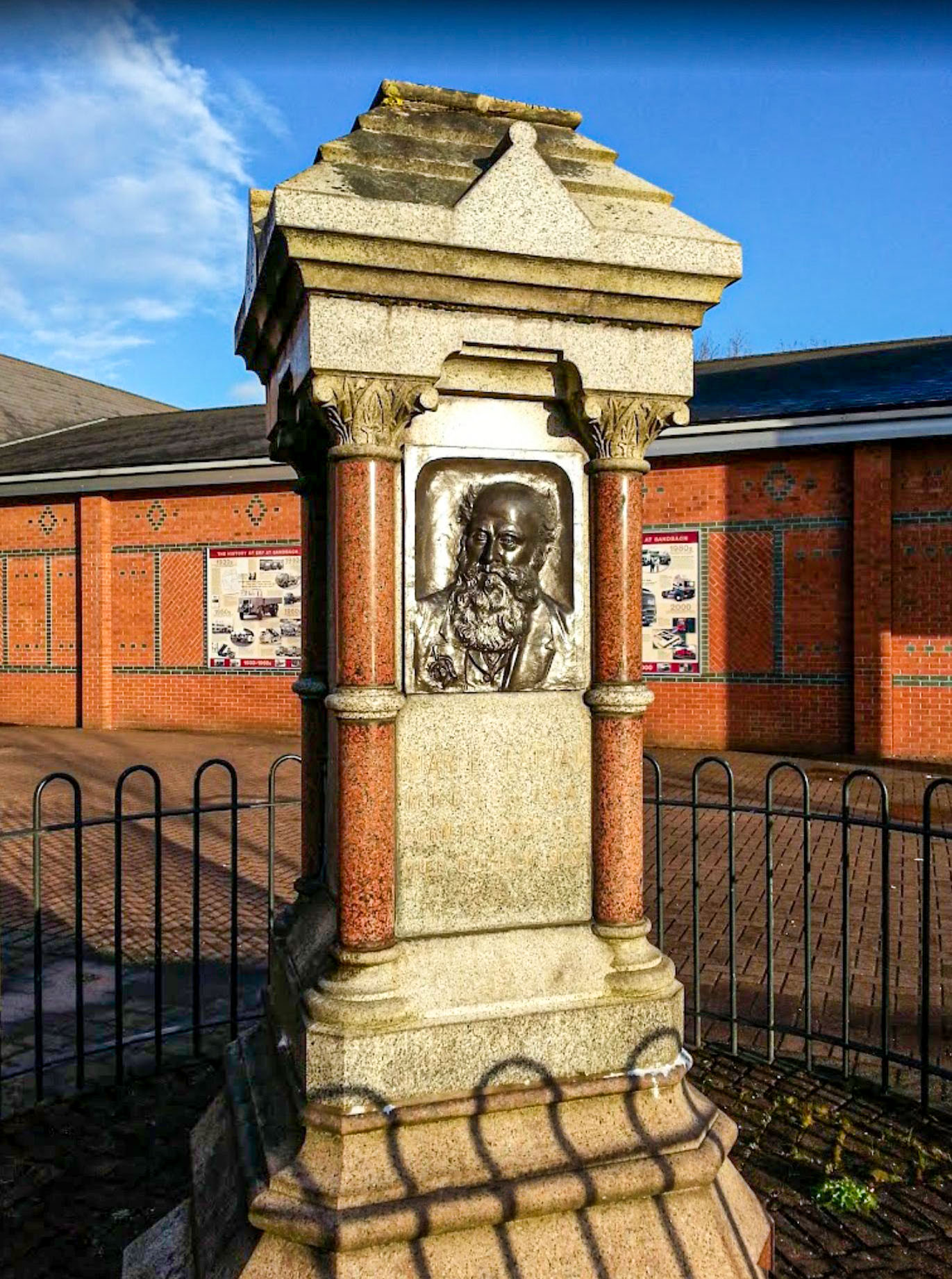Charles Latham MRCS LSA (1816–1907)
Charles Latham MRCS LSA (1816 – 7 July 1907), was a physician, surgeon and registrar from Sandbach. He was a member of the Royal College of Surgeons (MRCS), and in 1839 joined the Worshipful Society of Apothecaries (LSA).[28] On 3 November 1867, Latham delivered triplets to the wife of a brass dealer, which was reported in The Lancet.[29] He died on 6 July 1907, a noted cricket fan.[30] A public memorial statue to him is located outside the Ashfield Primary Care Centre in Sandbach (see photo below). He was affectionately known as “old Dr Latham”.[31]
Charles was the third son of Richard and Sarah Latham, and the nephew of John Latham (1761–1843). He went to Manchester Hospital, where he was apprenticed for 5 years to Scottish surgeon, Dr. John Robertson. After his apprenticeship, he became dresser at the Manchester Infirmary, and then moved to London where he obtained the certificates, of M.R.C.S., and L.S.A at St. Bartholomew’s Hospital, and then returned to Sandbach, and became a partner with Mr. Sutton. On 29 March 1842, he was appointed medical officer of health for the Sandbach Relief District, a position he held for a period of 57 years, retiring on 22 December 1899. On 25 March 1845 he was appointed medical officer to the District (when the workhouse was opened), a position he held for nearly 60 years. For over 30 years he was public vaccinator, and surgeon to the Bradwall Reformatory from its foundation until 19 March 1903 when he retired. For some time he was also registrar of births and deaths, a duty which he handed over to his son in 1888.
In 1843 he married Miss Mary Newnham Cobbe, daughter of Mr. William Venables Cobbe, of the Hough, near Wybunbury. Their children included Richard Venables Latham (b. 1845), William Henry Latham (b. 1849), Catherine Maria Latham (b. 1851), George Frederick Latham (b. 1852), Louisa Mary Latham (b. 1854), Harry Newham Latham (b. 1856) and Francis Gordon Latham (b. 1857).
He is buried in St Mary Church cemetery. His funeral was attended by many townspeople (photo).
Text source: Wikipedia
